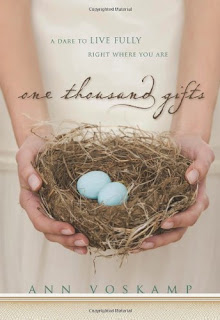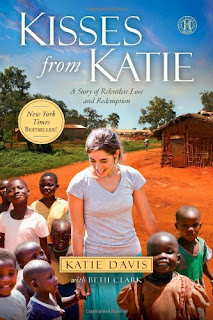I own several Bible versions and have the YouVersion app on my phone, but I've never owned a women's study Bible. So when the opportunity came to review the Holman Study Bible for Women, published by B&H and edited by Dorothy Kelley Patterson and Rhonda Harrington Kelley, I jumped on it! As you can see in my photos above and below, the leather bound Bible itself is very pretty to look at, with gray and pale teal design elements throughout. I'm personally relieved that for once something designated for women isn't pink. But moving past the superficial, let's get into the meat.
The immensity of a 2000-page study bible packed full of sidebars, charts, maps, footnotes and character profiles requires some selectivity on my part. I decided to offer my critique on one passage each from the Old Testament books of history, wisdom literature, the New Testament gospels and the epistles.
Exodus 1:15-21- Those Audacious, God-fearing Midwives
Perhaps because my second two sons were delivered by midwives, I really get into the brief story in Exodus 1:15-21 of Hebrew midwives Shiphrah and Puah, who defy Pharaoh's orders to kill any baby boys they help deliver. The Study Bible for Women offers lots of extra commentary for this story, which is the context for Moses' clandestine birth. The sheer number of sidebars helps readers slow down and really consider this passage. I found the "Biblical Womanhood" segment helpful in imagining Pharoah's directive in a human context. The editor notes that Pharaoh "apparently did not prescribe the means of killing the babies, but his order would clearly require deception, betrayal, and the denial of conscience" (69), which helped me imagine what it would be like to be in Shiprah's sandals. The footnote for 1:19-21 didn't quite ring true to me, saying that the midwives' excuse to Pharaoh was plausible. Would anyone believe that all the babies were born before the midwives could get there? I do agree that they "exploited the king's concern for the difference in strength he had observed between the Hebrews and Egyptians," but to me, it seems the midwives are mocking and insulting Pharaoh rather than trying to talk their way out of punishment. The "Hard Question" sidebar considers how God rewarded the midwives with families of their own (v. 21) in light of modern women who pine after such a reward. It encourages singles and those struggling with infertility to invest themselves in the service of others, as midwives do, and to "delight in being a daughter of the King, a member of the family of God and the household of faith" (68). I think the advice is sound, but would have liked more exploration into the modern day role women can have in being activists for social justice, but that might be a little too progressive for this Bible. Overall, I enjoyed the Study Bible for Women's treatment of this story.

Proverbs 31- Everyone's Favorite Acrostic on Godly Women
I was pleased with the way this Bible unpacked a passage that could have the effect of making even the most capable woman feel inferior. While I do sometimes overdress my children in wintertime, and prepare ingredients from afar (bananas anyone?), and even occasionally rise while it's still dark to make pancakes for my picky children, I think most of the boxes on my Proverbs 31 to do list are still unchecked. Happily, at the very beginning of a full-page sidebar, the editors dispense with the perceived pressure to be as perfect as King Lemuel's mom, saying, "The poem provides an 'A to Z' ideal, not to prompt despair that no such woman exists but to encourage the pursuit by every woman to the highest standards of excellence" (824). On the adjacent page, another "Biblical Womanhood" feature also places this poem in context, describing its traditional use in celebratory recitations to honor and thank moms and wives at the Sabbath dinner table. Finally, I was encouraged by the editor's idea that even though nobody can match all the virtues of the Proverbs 31 Woman, her "very diversity in giftedness and skills enables every woman to reach out a touch her in some way" (825).
Matthew 19- Jesus' High View of Marriage and Wives
The half-page "Hard Question" feature in Matthew 19 caught my attention, asking "Is divorce ever okay for a follower of Jesus?" The context of this question is Jesus answering the Pharasees' "trick" question whether it was lawful for a man to divorce his wife on any grounds. As the note indicates, the chauvinistic culture of the time allowed men to dump their wives on a whim, while women, being seen as property, had very little reciprocal power. Jesus uplifts the view of a woman's worthiness in the marriage equation with the oft-quoted, "For this reason a man will leave his father and mother and be joined to his wife, and the two will become one flesh." I like that the editors wanted to show how revolutionary Jesus was in treating woman as people (a concept beautifully explored in
Sarah Bessey's Jesus Feminist). The sidebar also states that God intends marriage to be a life-long commitment, making the preservation of even rocky marriages a top priority for godly Christians. Having been married for a brief 13 years, I fully agree that it's worth it to press through the rough spots, personality conflicts and misunderstandings with which most marriages are fraught. A mindset of commitment and mutual submission is the mind of Christ. However, the last bullet point readers are exhorted to heed deeply troubled me: "Physical, sexual, or emotional abuse in a marriage situation must be dealt with in a compassionate and firm manner within the context of church discipline." I read that sentence about four times, then discussed it with my husband, hoping I was misinterpreting what this sentence advises battered wives to do. Yes, wives and husbands in abusive situations should be ministered to by their church body, but I do not agree that the discipline of perpetrators of abuse should be dealt with solely in the context of the church. If you are in a family in which someone is abusing another member, you need to go to the police. In the editors' defense, they did not explicitly say to minimize, cover up such abuse or spiritualize the solution to such abuse. But I think some readers, especially those held in bondage to an abusive spouse, might understand this sentence to mean that they are not free to go to non-church authorities for help and that God requires they not divorce their abusive spouse. I pray not.
Philippians 4:8 - Dwell on These Things
Philippians is my favorite book of the Bible, and this has been my anthem for this particular season of my life. The Study Bible for Women does not provide specific commentary on 4:8, but I thought I would highlight the HCSB translation. The publisher calls it an accessible translation faithful to the original text. Depending on which version you've memorized scripture in as a child, you might find this version less poetic than say than the traditional King James or contemporary wording of the Message. But it is written in an easy-to-read and understand style. I liked the way Philippians 4:8 reads: "Finally, brothers, whatever is true, whatever is just, whatever is pure, whatever is lovely, whatever is commendable--if there is any moral excellence and if there is any praise--dwell on these things." The implication is that we should really sink into the things that reflect God. To dwell on something is to ponder it and to live it.
In conclusion
There is plenty of commendable content to dwell on in this study bible. The full-color maps, including an especially interesting map of Jesus' ministry around the Sea of Galilee and one of The Passion Week in Jerusalem, would be excellent focal points for a personal or group study. Character Profile features sprinkled throughout give a snapshot of more than 100 women mentioned in the bible, from heroes like Esther and Priscilla to the five Marys, to lesser known or unnamed women. While the theology and doctrine on gender roles is far more conservative than my own, I found plenty of light and inspiration and would recommend it to Conservative Evangelical women hungry for scripture.
A Give-Away!!!
Since I have begun reviewing complimentary copies of books, such as this one generously provided by B&H Publishing in exchange for my honest review, I felt God leading me to bless others with these free materials. If you would like to own this very gently read bible, and if you live near enough to Hopkinsville that I can deliver it to you in person, enter my drawing to win it by commenting on this post!
































